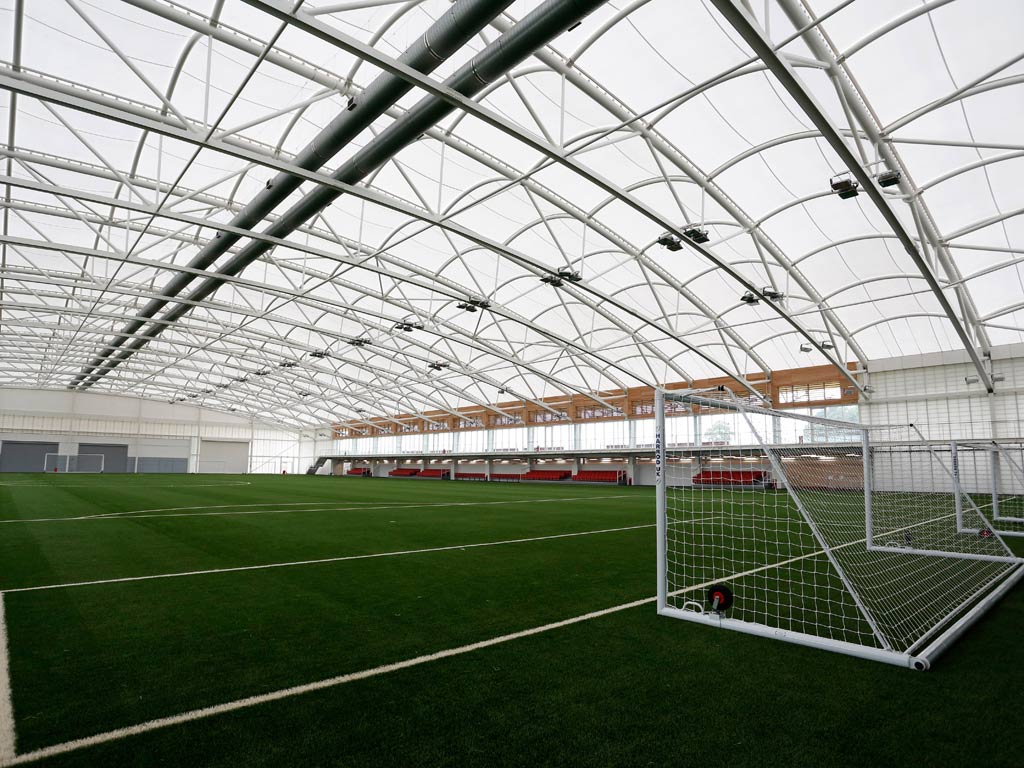An Oxbridge of football, for coaches rather than players
Over £100m has been spent on St George's Park but, Sam Wallace finds, the academy is about developing coaches, not players

Whether it is big international matches or cup finals at Wembley Stadium, the presentation of the 2018 World Cup bid or yesterday's opening of St George's Park, no one could doubt the Football Association's ability to pull a crowd. Royals, politicians, the heroes of 1966, Ashley Cole – these are the A-listers that any institution would like to attract to its marquee events.
Yesterday, at SGP, the famous names and the wider FA family were not disappointed, driven through the mist-shrouded 330 acres of the former Byrkley hunting lodge that now belongs to the FA, and on to the buildings and pitches that the governing body and partners have invested £105m in.
There is no denying that SGP is impressive and has clearly been designed with the philosophy that it should, at the very least, attempt to be the best of its kind. There is a hydrotherapy pool with a floor that goes up and down. There are five gyms. There is an artificial pitch of such a high standard that, we were told, Uefa would permit a Champions League game to be played on it – although, just to be clear, that is not in the offing.
Many of English football's biggest names – Steven Gerrard, pictured, Gary Neville, Sir Geoff Hurst – said it was the best they had ever seen. They may well be right. On a crisp autumn day in east Staffordshire with the FA president, the Duke of Cambridge, lavishing praise on the organisation and the park's driving force, David Sheepshanks, it felt like a great day for the FA.
You have to hand it to them. But the question remains, and it will do so for years to come, what exactly is SGP? What is it for? And how will we know that it has been a success?
It is easier to say what it is not. It is not an English Clairefontaine or even a modern-day Lilleshall, the old national football centre. All those institutions are, or were, specific developers of young talent with players in residence. In English football the development of young players is territory the clubs guard ferociously.
"When you are a kid you have the dream growing up," Gerrard said. "This place is an unbelievable place to learn and to grow and improve and, hopefully, you can achieve your dream there."
It was a nice line from a great footballer but SGP will not be developing young players. They will visit if they make it into one of the England junior teams, or if they become a full international. They may come here for tournaments or injury rehabilitation but SGP is no Clairefontaine, which runs a two-year residential course – ironically, modelled on Lilleshall (that which famously rejected the schoolboy Gerrard).
Instead, SGP will primarily be, as well as a training base for the 24 England representative teams that fall under the FA's auspices, an "Oxford and Cambridge of coach education", in the words of Sheepshanks. They will develop the teachers who, the FA hopes, will go out into the country better qualified to produce more sophisticated footballers.
Sheepshanks hopes that 250,000 coaches will pass through SGP before 2020, addressing the poor ratio of coaches to players in the country that compares badly with other leading European nations. Of that number, he would like 120 to qualify as Uefa pro-licence coaches and a further 500-1,000 with the A-licence. It is the development of football coaches by which SGP's legacy will be decided.
It is just a pity that when one sees the magnificent facility Sheepshanks and his team have come up with that, as the Oxbridge of English football, it is not admitting its first students – young footballers who live and train on site with a view to being developed into the best.
An insight into the Premier League's attitude towards SGP could be ascertained by the absence yesterday of Richard Scudamore, the league's chief executive.
Join our commenting forum
Join thought-provoking conversations, follow other Independent readers and see their replies
Comments
Bookmark popover
Removed from bookmarks